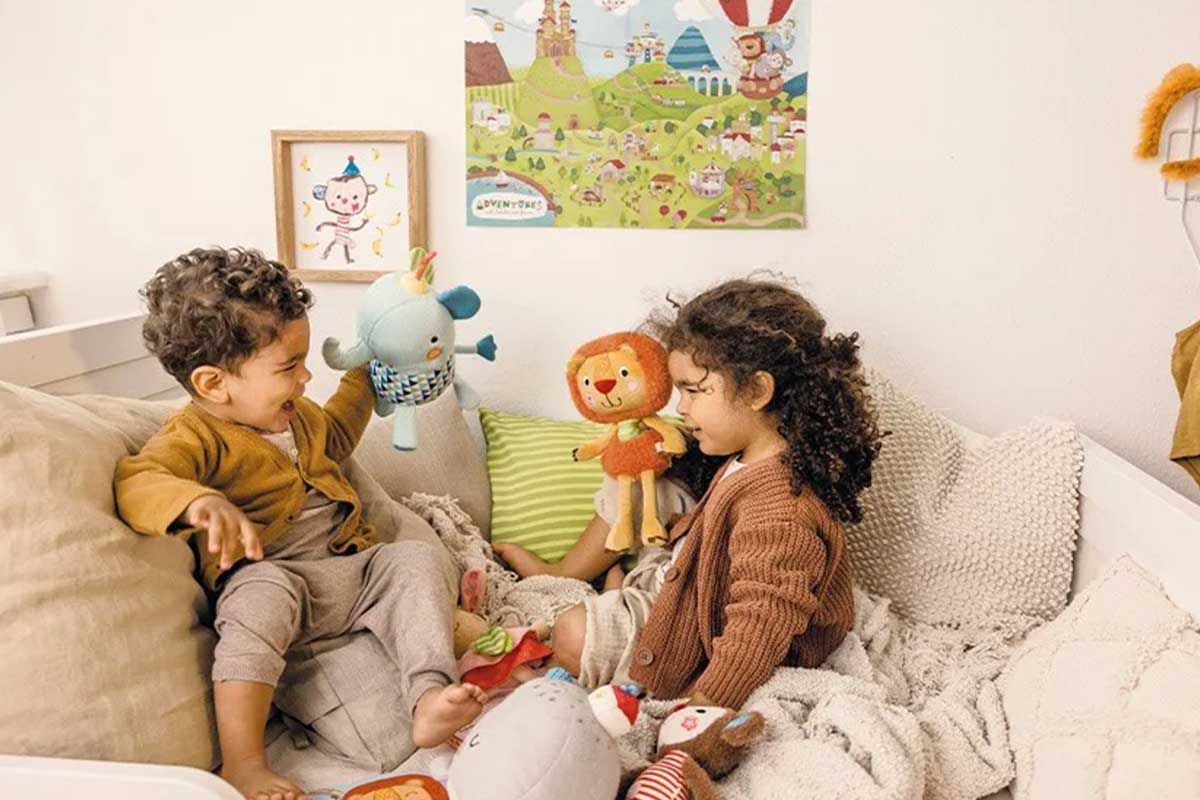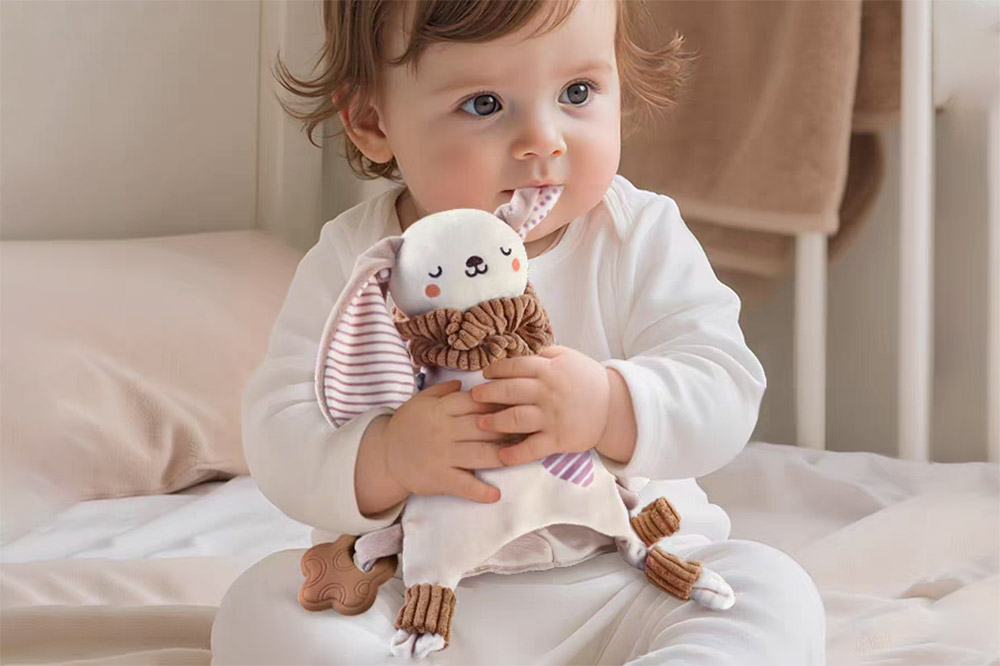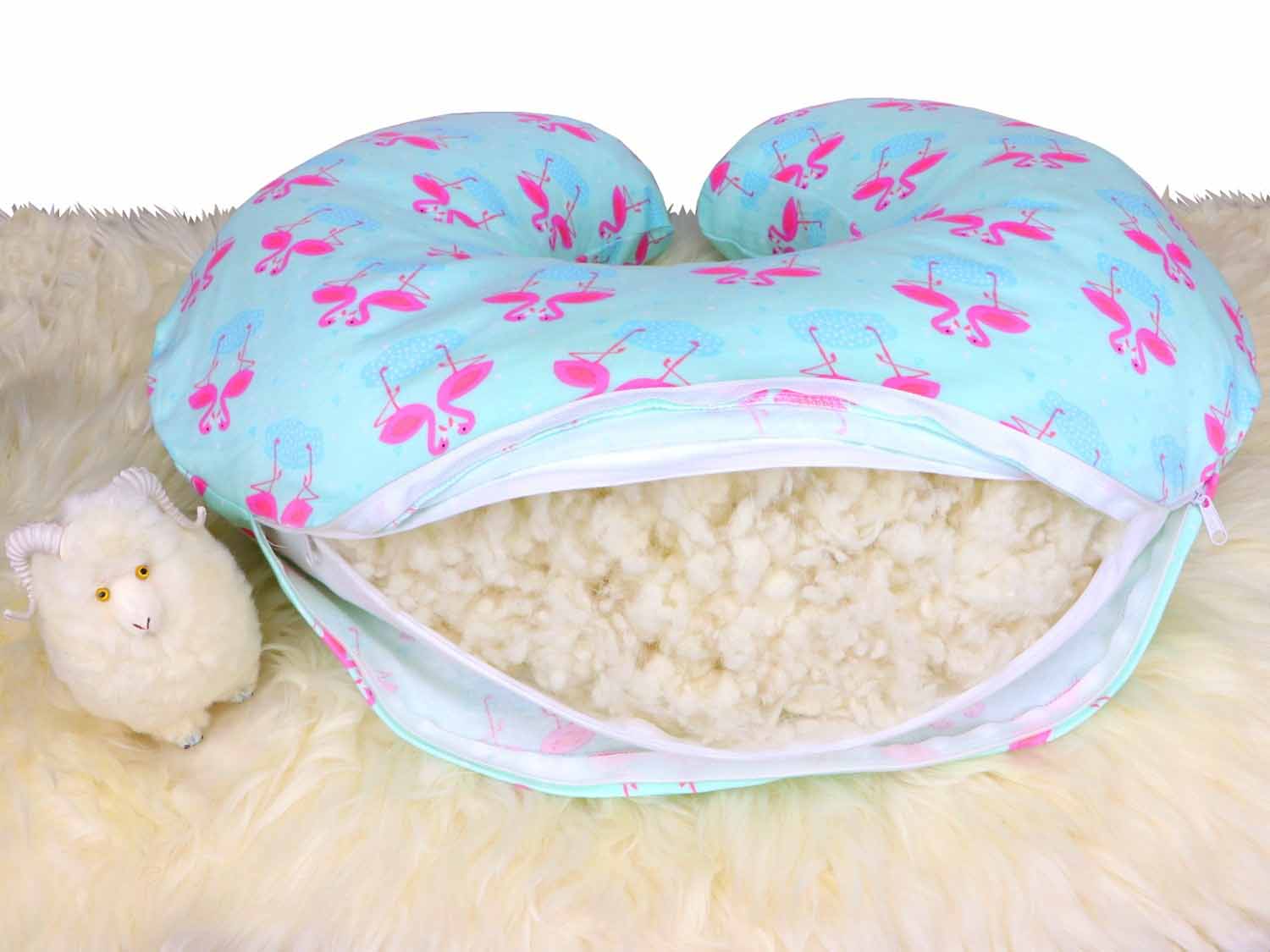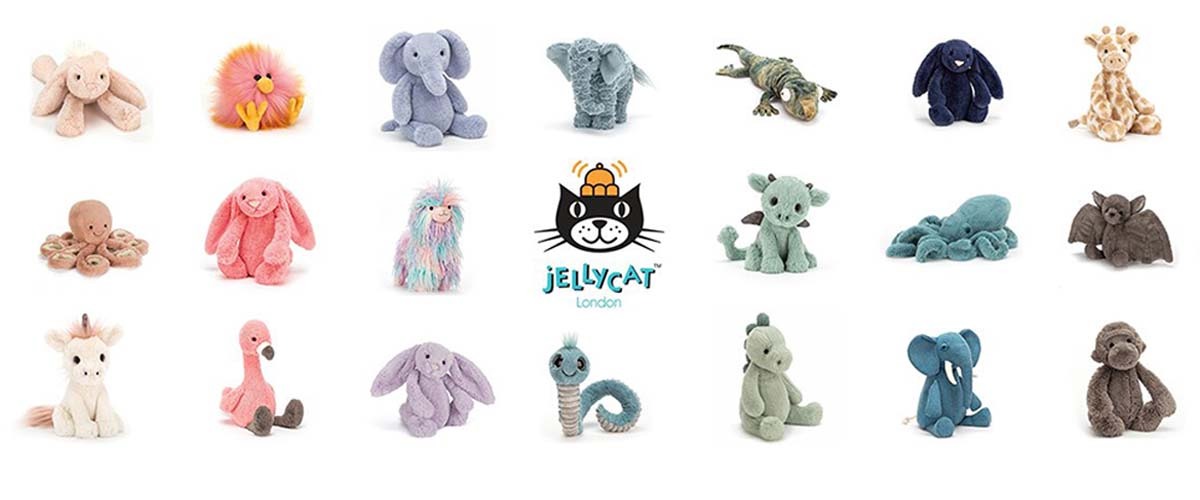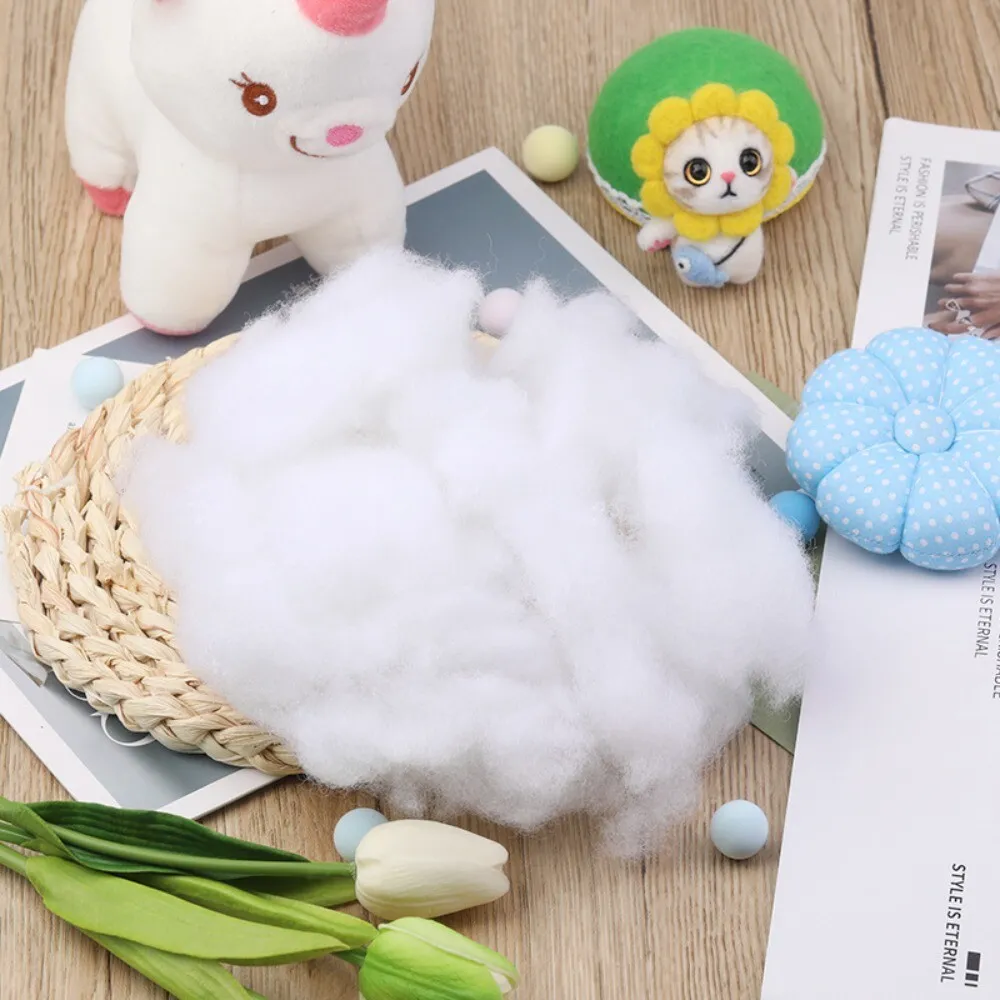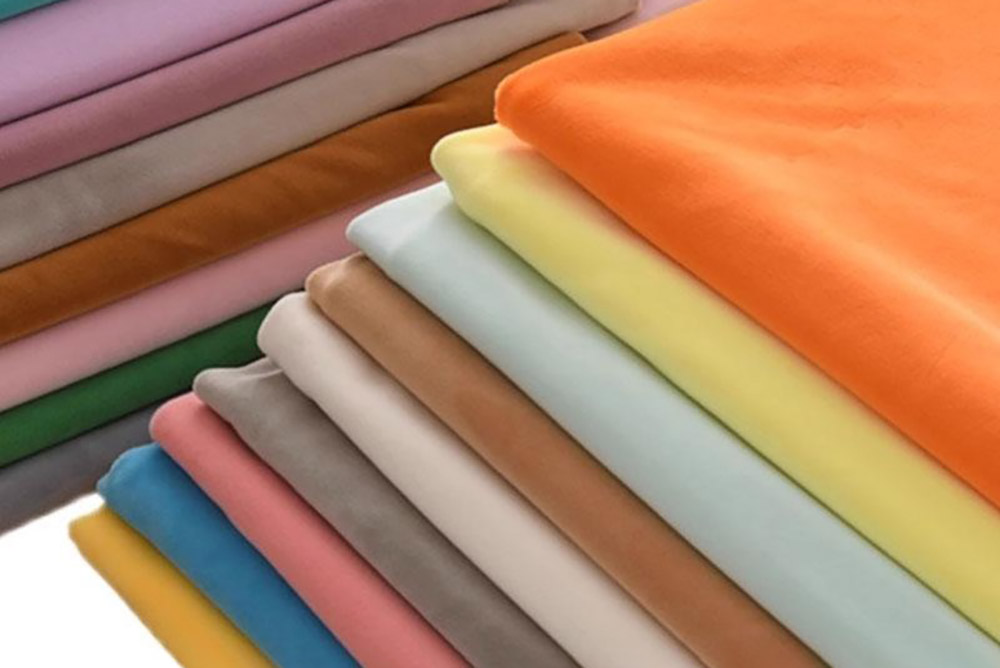Children’s plush toys are loved worldwide for their comfort and charm. But behind every soft and huggable design lies a critical question: is it safe for a child? For parents, retailers, and professional buyers, safety is non-negotiable. Plush toys must meet strict international standards to ensure they are free from toxic chemicals, choking hazards, and other risks.
This guide explains how to identify safe plush toys, covering certifications, fabrics, fillings, testing, labeling, and supplier compliance.
What Safety Certifications Should Buyers Look for in Plush Toys?

The first sign of a safe plush toy is certification. Reputable manufacturers ensure every product passes international safety standards. The most important certifications are:
- EN71 (Europe) – tests flammability, mechanical safety, and chemicals.
- ASTM F963 (USA) – focuses on toxicity, choking hazards, and labeling.
- CPSIA (USA) – ensures toys are lead-free and phthalate-free for children under 12.
- ISO 8124 (International) – harmonizes toy safety standards across markets.
- ST Standard (Japan) – strict requirements for infant-safe products.
Buyers should request certificates and lab reports before confirming orders. Without certification, toys cannot legally be sold in most global markets.
Key Safety Certifications
| Region | Certification | Focus Area | Buyer Action |
|---|---|---|---|
| Europe | EN71 | Flammability, chemicals, mechanics | Required for EU imports |
| USA | ASTM F963 | Toxicity, choking, labeling | Essential for US retail |
| USA | CPSIA | Lead, phthalates | Needed for children under 12 |
| Japan | ST Standard | Infant chemical and safety checks | Required for Japan market |
| Global | ISO 8124 | International harmonized safety | Useful for multi-region buyers |
How Do Fabrics, Fillings, and Accessories Affect Plush Toy Safety?

Every part of a plush toy—outer fabric, inner stuffing, and accessories—affects safety.
- Fabrics: Safe fabrics include velboa, minky, fleece, and organic cotton. These must be free from harmful dyes and chemicals.
- Fillings: Polyester fiberfill is the safest, being hypoallergenic and washable. Beads or pellets must be double-secured in pouches.
- Accessories: Embroidered eyes and noses are best for infants. Plastic parts must pass pull tests to ensure they don’t detach.
If any part fails, the toy may pose risks such as choking, allergic reactions, or chemical exposure. That’s why global buyers demand full transparency on material sources.
Safe Materials Overview
| Component | Safe Option | Risk if Unsafe |
|---|---|---|
| Fabric | Velboa, minky, organic cotton | Harmful dyes, skin irritation |
| Stuffing | Polyester fiberfill, natural cotton | Mold, toxic chemicals, clumping |
| Accessories | Embroidery or safety-locked parts | Choking hazards, detachment risk |
What Tests Ensure Plush Toys Are Free from Choking and Toxic Hazards?

Testing is the foundation of toy safety. Certified plush toys must pass mechanical, chemical, and flammability tests before export.
- Mechanical Tests: Pull tests ensure eyes, noses, and seams cannot be torn off. Drop tests confirm toys remain intact under stress.
- Chemical Tests: Materials are checked for lead, phthalates, formaldehyde, and azo dyes.
- Flammability Tests: Fabrics must burn slowly or resist ignition.
- Wash Tests: Plush toys must stay safe and intact after washing.
Buyers should only work with factories that partner with third-party labs like SGS, Intertek, or TÜV. Without proper testing, toys risk rejection at customs or recalls in retail markets.
Key Safety Tests for Plush Toys
| Test Type | Purpose | Buyer Benefit |
|---|---|---|
| Mechanical Tests | Prevent choking hazards | Ensures secure parts |
| Chemical Tests | Avoid toxic exposure | Safe for children’s health |
| Flammability | Reduce fire risk | Legal compliance in EU/US |
| Washability | Maintain safety after cleaning | Longer lifespan, parent trust |
How Can Parents Identify Age-Appropriate Plush Toys for Children?

Age appropriateness is crucial for safety. A toy safe for a 5-year-old may be unsafe for a baby. Manufacturers label toys according to recommended ages, and parents should follow these guidelines.
- 0–3 years: No small parts, no plastic eyes, only embroidered features. Fabrics and stuffing must be hypoallergenic.
- 3–6 years: Plush toys can include some accessories but must still pass pull tests. Weighted toys may be introduced.
- 6+ years: Toys may have more decorative elements but must remain compliant with safety standards.
Parents should also check for clear washing instructions and avoid toys that look poorly stitched or cheaply made.
Plush Toys by Age Group
| Age Group | Safety Requirements | Recommended Features |
|---|---|---|
| 0–3 years | No small parts, hypoallergenic | Embroidered eyes, organic fabrics |
| 3–6 years | Strong seams, tested accessories | Weighted plush, minky fabrics |
| 6+ years | Decorative elements allowed | Collectible plush, seasonal toys |
What Role Do Labels, Instructions, and Manufacturer Transparency Play in Safety?

Labels and instructions are more than just marketing—they are part of safety compliance.
- Labels: Must include safety marks (CE, ASTM, CPSIA), recommended age group, and manufacturer details.
- Instructions: Provide washing guidelines and usage recommendations. For infants, clear “suitable from birth” notes are critical.
- Transparency: Trusted manufacturers openly share test reports, material origins, and compliance details.
A toy without proper labeling or vague manufacturer information is a red flag. Professional buyers should only source from suppliers that provide full transparency.
Labeling & Transparency Checklist
| Requirement | Why It Matters | Buyer/Parent Action |
|---|---|---|
| Safety Markings | Proof of certification | Look for CE, ASTM, CPSIA labels |
| Age Guidance | Ensures correct use by children | Follow age-appropriate markings |
| Manufacturer Info | Tracks origin, builds trust | Check for traceable details |
| Wash Instructions | Maintains safety after cleaning | Verify care label is included |
How Do Buyers Evaluate a Supplier’s Compliance with International Safety Standards?

For B2B buyers, supplier evaluation is critical. Many issues can be avoided by choosing the right factory partner. Buyers should:
- Request Certifications: EN71, ASTM, CPSIA reports for fabrics, stuffing, and accessories.
- Check Testing History: Reliable factories have ongoing testing records, not just one-time reports.
- Audit Production: Conduct supplier audits or use third-party inspectors.
- Review Transparency: A trustworthy supplier shares material sources, production SOPs, and quality checks.
At Kinwin, we emphasize proactive compliance. Our plush toys are tested at every stage, from material sourcing to finished product, to ensure they meet global standards.
Buyer Supplier Evaluation Guide
| Step | What to Check | Why It Matters |
|---|---|---|
| Certifications | EN71, ASTM, CPSIA, ISO | Guarantees compliance |
| Test Records | Ongoing third-party lab tests | Confirms reliability |
| Factory Audits | On-site inspections, social compliance | Ensures ethical, safe production |
| Transparency | Open about materials & processes | Builds buyer confidence |
Conclusion
A safe plush toy is defined by certifications, safe materials, secure accessories, and reliable suppliers. Parents should look for clear labels and age guidance, while buyers must demand compliance and transparency from manufacturers.
At Kinwin, we help global buyers create plush toys that are certified, child-safe, and market-ready. From fabrics and stuffing to testing and labeling, our process ensures that every toy meets international safety standards and earns consumer trust.
📧 Contact us at :[email protected]
🌐 Visit kinwintoys.com
Let’s develop safe and appealing plush toys that parents can trust and children will love.


